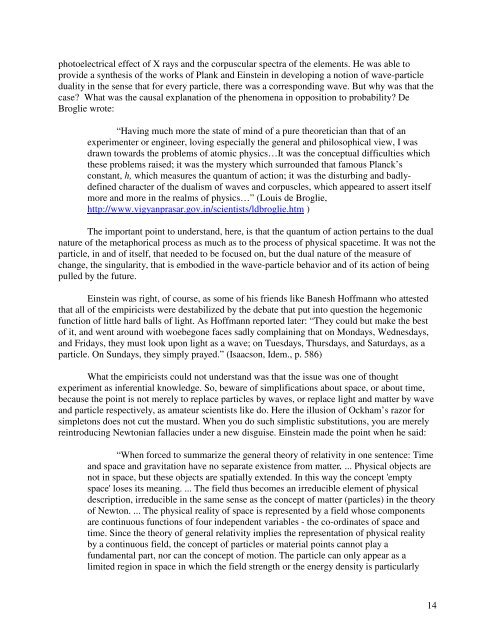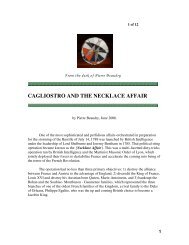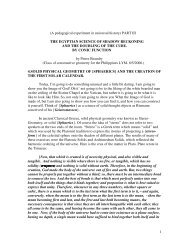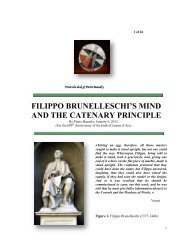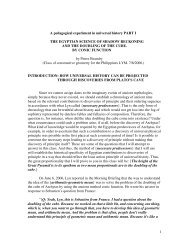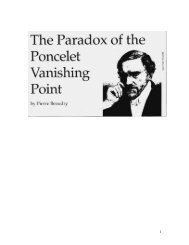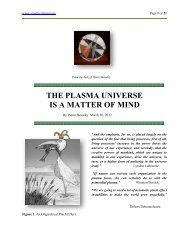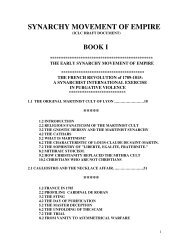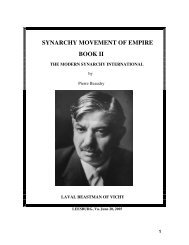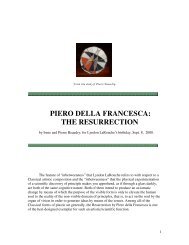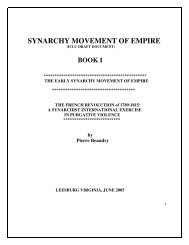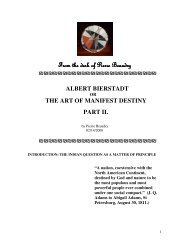LOUIS DE BROGLIE : THE WAVE AND PARTICLE PARADOX
LOUIS DE BROGLIE : THE WAVE AND PARTICLE PARADOX
LOUIS DE BROGLIE : THE WAVE AND PARTICLE PARADOX
Create successful ePaper yourself
Turn your PDF publications into a flip-book with our unique Google optimized e-Paper software.
photoelectrical effect of X rays and the corpuscular spectra of the elements. He was able toprovide a synthesis of the works of Plank and Einstein in developing a notion of wave-particleduality in the sense that for every particle, there was a corresponding wave. But why was that thecase? What was the causal explanation of the phenomena in opposition to probability? DeBroglie wrote:“Having much more the state of mind of a pure theoretician than that of anexperimenter or engineer, loving especially the general and philosophical view, I wasdrawn towards the problems of atomic physics…It was the conceptual difficulties whichthese problems raised; it was the mystery which surrounded that famous Planck’sconstant, h, which measures the quantum of action; it was the disturbing and badlydefinedcharacter of the dualism of waves and corpuscles, which appeared to assert itselfmore and more in the realms of physics…” (Louis de Broglie,http://www.vigyanprasar.gov.in/scientists/ldbroglie.htm )The important point to understand, here, is that the quantum of action pertains to the dualnature of the metaphorical process as much as to the process of physical spacetime. It was not theparticle, in and of itself, that needed to be focused on, but the dual nature of the measure ofchange, the singularity, that is embodied in the wave-particle behavior and of its action of beingpulled by the future.Einstein was right, of course, as some of his friends like Banesh Hoffmann who attestedthat all of the empiricists were destabilized by the debate that put into question the hegemonicfunction of little hard balls of light. As Hoffmann reported later: “They could but make the bestof it, and went around with woebegone faces sadly complaining that on Mondays, Wednesdays,and Fridays, they must look upon light as a wave; on Tuesdays, Thursdays, and Saturdays, as aparticle. On Sundays, they simply prayed.” (Isaacson, Idem., p. 586)What the empiricists could not understand was that the issue was one of thoughtexperiment as inferential knowledge. So, beware of simplifications about space, or about time,because the point is not merely to replace particles by waves, or replace light and matter by waveand particle respectively, as amateur scientists like do. Here the illusion of Ockham’s razor forsimpletons does not cut the mustard. When you do such simplistic substitutions, you are merelyreintroducing Newtonian fallacies under a new disguise. Einstein made the point when he said:“When forced to summarize the general theory of relativity in one sentence: Timeand space and gravitation have no separate existence from matter. ... Physical objects arenot in space, but these objects are spatially extended. In this way the concept 'emptyspace' loses its meaning. ... The field thus becomes an irreducible element of physicaldescription, irreducible in the same sense as the concept of matter (particles) in the theoryof Newton. ... The physical reality of space is represented by a field whose componentsare continuous functions of four independent variables - the co-ordinates of space andtime. Since the theory of general relativity implies the representation of physical realityby a continuous field, the concept of particles or material points cannot play afundamental part, nor can the concept of motion. The particle can only appear as alimited region in space in which the field strength or the energy density is particularly14


